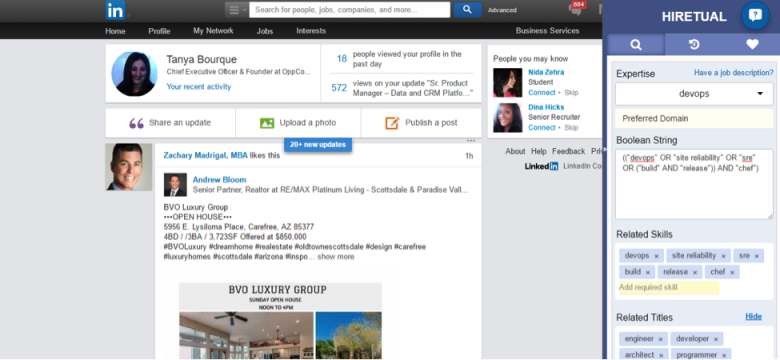Market mapping is to recruiting what financial planning is to your future. Both are non-negotiables that you shouldn’t forego, both will save you time and energy, and both will help you avoid tough conversations—whether it’s with a manager (market mapping) or family member (financial planning).
Not to mention, recruiters who using market mapping to their advantage can also look forward to a lower cost-per-hire, more quality hires, and a faster time-to hire.
So what is this mysterious wonder worker?
To put it simply, market mapping is the art of using competitive intelligence to understand how many candidates are in the market, their average salary, who employs most of them, and what the job-to-candidate ratio is – and then using all of that information to identify the best approach for your sourcing plan.
It’s the proactive data-gathering phase that should precede any candidate search, and the best way to really get some insight into how to use it to your advantage is to work through an example. So here we’ll use it to go through the process of finding a Dev Ops Engineer with Chef software experience in New York City.
Step One: Identify how many candidates are on the market in your exact location.
There are paid tools, like Wanted Analytics, that can help with this, but for our example, we will use LinkedIn. By searching LinkedIn for the kind of candidate you need, you can get a rough estimate of how many are in the market for your opening (it obviously doesn’t account for potential candidates not on LinkedIn). I would recommend building a Boolean string to conduct your search. If are not good at building strings, I would recommend using Hiretual to help you build your string.

After running the search, we find that have 469 candidates located in the Greater New York City Area with the skills we want for the search. We now know how many candidates are available on LinkedIn.

Step Two: Research the average salary.
Let’s for this example say the hiring manager has told us the company can afford 120K a year for this position. Let’s say this is the first time we have ever conducted this type of search in New York City, and we don’t have an exact figure for what the market is paying. Also, the market rate is constantly changing due to supply and demand. Indeed.com is one of best free resources to use for this market data. We are using the salary feature in Indeed.com.

According to this data, 120K will not work as a far as a budget goes. We are well below the market rate. We will either have to review our requirements or get approval for a higher salary. This job also has a high demand with a low supply (as you’ll come to calculate in the next step). In order to compete, we will more than likely have to offer a better salary than the average.
Step Three: Calculate the job-to-candidate ratio.
If you calculate this based on the LinkedIn and Indeed data we gathered in step one and three, there are 275 jobs for 476 candidates. However, not all of these candidates will fit based on the criteria set by the hiring manager. Not to mention, you have to consider the candidates who are not open to new opportunities.
We are probably looking at 3 jobs for every available candidate that fits our criteria. Scoping out your competition and what they are offering is also a good strategy. Some of the positions listed with agencies may only be contract opportunities. Also, some candidates do not want full-time opportunities.
Once you have a clearer grasp on the number of jobs out there and the number of candidates out there, you can calculate your ratio.
Step Four: Find out who employs most of these candidates in your location.
We can do two things to get this information. You can do an advanced search on LinkedIn and see the top employers. The second method would be to search Indeed.com for the job title and note who else is competing for candidates. For DevOps Engineer in New York City, there are 275 jobs listed on Indeed.com, and it appears the majority could either be contracting or staffing agencies working with clients. According to Indeed.com, Workbridge Associates has 18 job listings. Selby Jennings, which is a staffing agency specializing in positions with banks, has 15 jobs listed. Based on this information, we may want to try source candidates working for the large banks.

Step Five: Use all of your research to create a sourcing plan.
You will need to source at least 30 profiles. 10% of them will be viable profiles, which means you will present your top three profiles to your hiring manager. Start by confirming the salary offer as per your research, and the move forward by sourcing from companies identified in step four of your process. Good luck!
If you need help doing cold outreach to potential candidates you haven’t previously had contact with, read our article on #breakingtheice.
 MightyRecruiter
MightyRecruiter




Leave a Reply